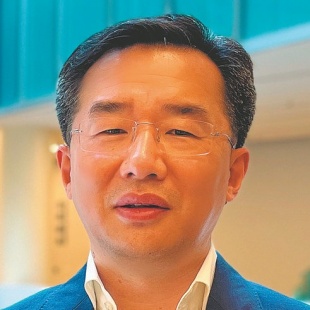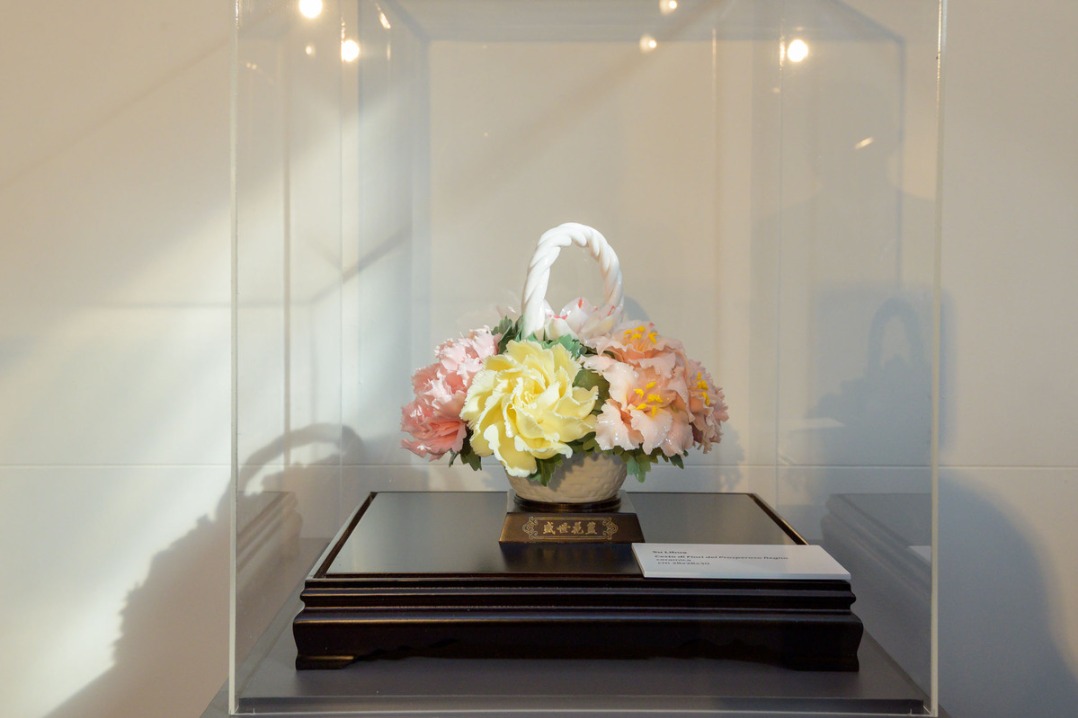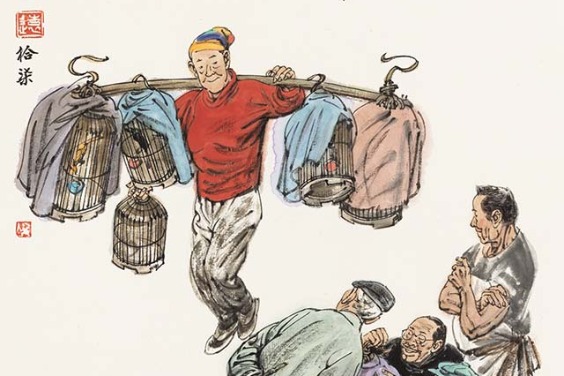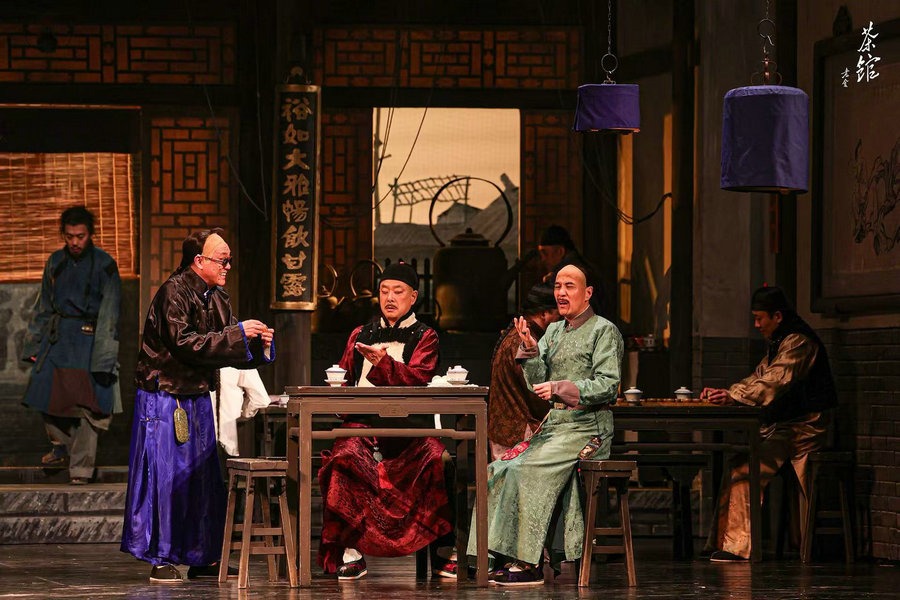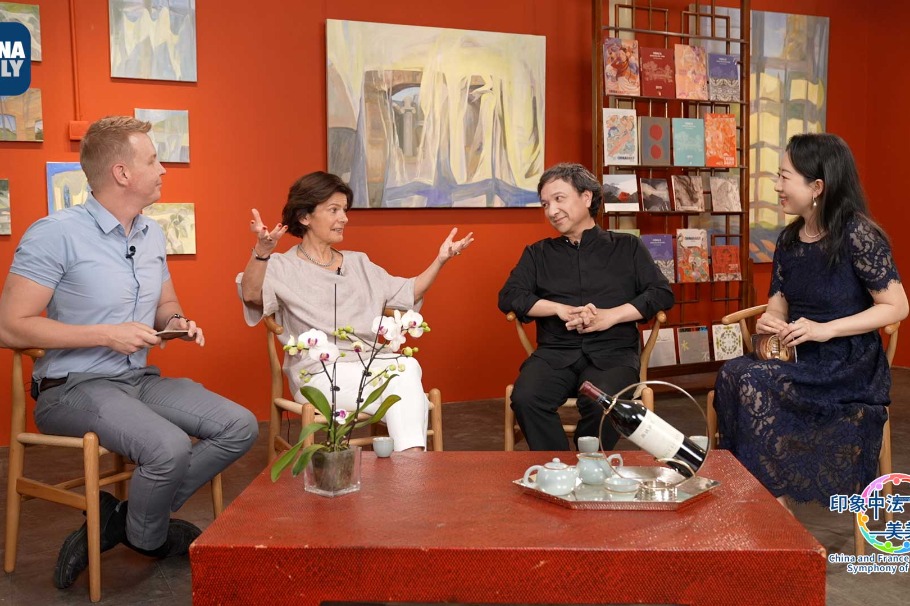Museums open window for cultural exchanges
Chinese, Peruvian exhibitions help to enhance mutual understanding


At the Inka Museum in Cuzco, Peru, visitors are greeted by a fascinating juxtaposition of cultural treasures, with giant bronze trees, golden masks and ornaments from China's ancient Shu kingdom displayed alongside relics from the ancient Peruvian Inca civilization.
The exhibition, Light of the Sun: A Dialogue Between Ancient Shu and Inca Civilizations, which opened on Nov 5, highlights the intriguing similarities between these two distinct cultures, both of which revered the sun and cherished gold. The replicas of Chinese artifacts and 3D-printed imitations that are on display are on loan from the Jinsha Site Museum in Chengdu, Sichuan province, and the Sanxingdui Museum in Guanghan, Sichuan.
The exhibition can serve as a window into China's cultural heritage for the people of Cuzco, and can deepen exchanges and mutual understanding between China and Peru, said Mohenir Julinho Zapata, the Inka Museum's director.
Zapata added that the exhibition will strengthen the friendship and exchanges between China and Peru and create opportunities for long-term communication and dialogue.
It's not the Peruvians' first experience of China's ancient culture.
In 2016, to celebrate the 45th anniversary of the establishment of China-Peru diplomatic relations, a show featuring more than 100 exhibits from museums across China opened at the National Museum of Archaeology, Anthropology and History of Peru in Lima.
Ivan Ghezzi, who was then director of the Lima museum, said: "It was the cultural event of that year in Lima. Thousands of people from Lima and also from other provinces of Peru visited the show. They appreciated artifacts they only knew from books and photos, such as the famous terracotta soldiers."
Ghezzi said that although China and Peru are becoming closer in areas of investment and trade, frequent cultural exchanges have helped Peruvians to understand that their shared history and cultural connections are even deeper than economic and political ties.
In the past few years, many key museums in China have also hosted exhibitions of relics from Peru, introducing to Chinese audiences the Andean civilizations, a series of complex societies that developed in the Andes Mountains region of South America and spanned from the northern highlands of Peru to northern Chile and Argentina.
Andres Alvarez Calderon, president of the Larco Museum in Lima, said that 24 of its exhibits, including pottery, gold objects and textiles, were displayed in China through a joint exhibition involving 11 Peruvian museums in 2021. The exhibition toured five major cities in China, including Beijing, Tianjin and Chongqing, and received a warm welcome from Chinese visitors.
Calderon said that Peru, like China, Egypt, Mesopotamia, India and Mexico, was a cradle of civilization, and these peoples formed the basis of modern civilization more than 5,000 years ago.
"In historical terms, we have a lot in common, and there are many examples of Chinese symbolism that coincide with the agricultural societies that developed in our lands: symbols of birds representing the world above, snakes representing the underworld, and felines representing our earthly world," he said.
The number of Chinese visitors to the Larco Museum, though not yet significant, is increasing each year, with most of them very interested in the gold artifacts, according to Calderon.
A passionate collector and archaeologist, Calderon is also fascinated by relics from ancient China, especially those from the Han Dynasty (206 BC-AD 220), whose decorative items, in his eyes, are similar to those of the Formative Epoch of Peru, which thrived about 3,200 years ago.
"The relation between Peru and China becomes more extensive and stronger day by day. I think the historical component is essential to understand that we, as human beings, have a common root, a very similar history, and that these features should unite us to strengthen our current relationship," he said.
Another exhibition involving 14 Peruvian museums and featuring 168 artifacts has been displayed in China, garnering great popularity.
From January to April, the exhibition was held at the Jinsha Site Museum in Chengdu, Sichuan, and drew more than 600,000 visitors. They experienced the Inca civilization, which was centered in what is now Peru and thrived from the early 13th century until the Spanish conquest in the 16th century.
On April 19, the show went to the Nanshan Museum in Shenzhen, Guangdong province. It featured a diverse range of artifacts, including bone tools, metalwork, stone objects, pottery, woodwork, textiles, paintings and mummies.
Originally scheduled to conclude in August, the exhibition was extended until October due to popular demand, attracting about 400,000 visitors. In comparison, the Nanshan Museum recorded a total of more than 800,000 visitors throughout last year, said Qi Xin, the museum's director.
"I was quite surprised by the enthusiasm of the audience. Many children even researched this geographically unfamiliar civilization before visiting the exhibition," said Qi.
During the summer vacation, the museum experienced a peak in visitor numbers, with up to 10,000 visitors in a single day. The museum was open seven days a week and extended its closing time, from 6 pm to 8 pm.
Visitors learned from the exhibition that some common foods, such as potatoes, originally came from Peru, and they were very interested in the mystery of the Inca civilization's disappearance, said Qi. They also were impressed by the vibrant colors of the artifacts.
On July 25, when Peruvian President Dina Ercilia Boluarte Zegarra began a visit to China in Shenzhen, her first stop was the Nanshan Museum to visit the exhibition of Peruvian artifacts.
Museum director Qi said: "As a district museum in Shenzhen, I never imagined that our exhibition would attract the president of Peru. She really emphasized the importance of cultural exchanges."
Qi also said he believed that only through mutual learning can people from different civilizations establish a better foundation for communication, and visiting exhibitions and learning about artifacts are effective ways to learn about each other's culture.
"For many Chinese people, Peru is distant and not the top destination, but if they can learn about Peruvian culture right at their doorstep, it might encourage some of them to travel to this country in the future," he said. "This is what I believe makes our exhibition very meaningful."


